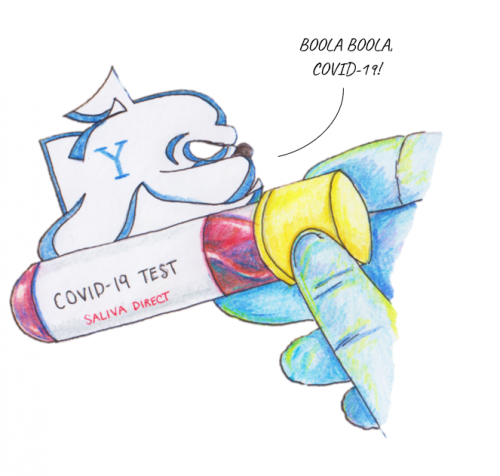Art by Ryan Bose-Roy.
Recently submitted for FDA Emergency Use Authorization, SalivaDirect is a promising diagnostic test for SARS-Cov-2 that allows for non-invasive sampling and inexpensive processing.
Data published on the preprint server medRxiv by researchers at Yale School of Public Health, Connecticut Agricultural Experimental Station, and Yale University School of Medicine indicate that SalivaDirect has comparable sensitivity to current assays, meaning that it is similarly able to detect infected individuals, without requiring tubes containing preservatives, specialized reagents for nucleic acid extraction, or vendor-specific products.
The SalivaDirect method involves a combination of saliva with proteinase K, heat inactivation, and dualplex RT-qPCR. Proteinase K and heat allows for the isolation of nucleic acid via destruction of protein in the sample instead of a more costly extraction. Dualplex RT-qPCR, a method used to quantify viral expression from nucleic acid present, reduces the number of protocol reactions to one per sample. Detection of SARS-Cov-2 was stable in saliva without preservatives for at least 7 days at each of three thermal conditions: 4°C, 19°C, and 30°C. Efficiency and flexibility of the method allows for a reduction in cost per sample to $1.29 if sampled without a collection aid and to $4.37 if sampled with one.
This new testing modality’s growing success has drawn a spotlight onto SalivaDirect. The research team, led by Yale’s Anne Wyllie and Nathan Grubaugh, is partnering with the National Basketball Association to study the validity of SalivaDirect when compared to nasopharyngeal swabs. The goal is to better understand how results differ among these tests for asymptomatic and pre-symptomatic cases in addition to symptomatic cases. They are hopeful that this new method can increase accessibility and scalability of testing.

